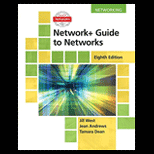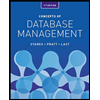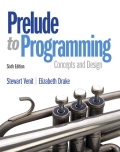
Computer Networking: A Top-Down Approach (7th Edition)
7th Edition
ISBN: 9780133594140
Author: James Kurose, Keith Ross
Publisher: PEARSON
expand_more
expand_more
format_list_bulleted
Question
thumb_up100%

Transcribed Image Text:Q1. Write a java program to draw triangle
1 Like
2 2
3 3 3
4
4 4 4
●
●
Default constructor must set values for rows and columns 4.
Parametrized constructor will take value upon object creation.
First draw() method will print the triangle for number of rows and columns set
during object creation.
Second draw() will print the triangle having rows and columns passed as parameters.
Note: Please make sure rows value must be equal to columns before drawing rectangle.
otherwise print "No Triangle".
-rows: int
Triangle
-columns: int
+Triangle()
+Triangle(rows:int, columns:int)
+draw():void
+draw(rows:int, columns:int):void
Expert Solution
arrow_forward
Step 1
The complete answer in a java programming language is below:
Create a Triangle for your class. Create columns 3 and two member variable rows. Set the rows and columns to 4 and 4 by creating the default constructor. Create a parameterized constructor to pass values to the rows and columns. Create a method for printing the triangle with the number of rows and columns set at object creation 6. Create a method for printing the triangle that accepts rows and columns as parameters.
Step by stepSolved in 4 steps with 2 images

Knowledge Booster
Similar questions
- 1. Create a class Employee with parameters name, id, designation, and basicSalary. Use appropriate datatypes and access specifiers. Use default constructor to create objects of employee. Write methods toset and get the values of parameters of employee. Write methods to find total salary of employee andto display the complete details of employee along with total salary. Create another class TestEmployeewhich creates array of n number of employees, uses appropriate set methods to set the values ofparameters of every employee. Display the details of each employee. (Total salary = basic salary + 80%of basic salary)arrow_forwardCreate a code the follow way: Each student object should also contain thenumber of earned credits. Provide a constructor that sets this value based on parameter value. Overload theconstructor such that the number of earned credits is initially zero. Provide setter and getter for this newfield. Modify the toString method such that the new information is included in the description of thestudent. Modify the driver class main method to exercise the new Student methods.arrow_forwardWrite an enumerated data type that describes types of triangles based on the number of equal sides. The types are equilateral (3 equal sides), isosceles (2 equal sides), and scalene (0 equal sides). Write the complete enum. Include a variable/field in the enum that represents the number of equal sides for that type of triangle. Include a getter for this variable. Include a toString method. Write a statement to create a variable of your enum type called myFavoriteTriangleType. Initialize the variable to some value. This statement would go in a separate class, perhaps in a main method.arrow_forward
- Shape Class JAVA Implement the Shapehierarchy shown in figure below. Shape TwoDimensionalShape ThreeDimensionalShape Circle Square Sphere Cube Each TwoDimensionalShape should contain method getArea to calculate thearea of the two-dimensional shape. • Each ThreeDimensionalShape should have methods getArea and getVolume tocalculate the surface area and volume, respectively, of the three- dimensional shape. Add OneDimensionalShape with sub classes , and add more shapes to classes (TwoDimensionalShape , ThreeDimensionalShape ). Create a program that uses an array of Shape references to objects of each concrete class in the hierarchy. The program should print a text description of the object to which each array element refers. • Also, in the loop that processes all the shapes in the array, determine OneDimensionalShape, whether each shape is a TwoDimensionalShape or a ThreeDimensionalShape. If it is a TwoDimensionalShape, it is display ThreeDimensionalShape, display its area and volume. its…arrow_forwardHello all! Need some help with this assignment. Need to create an array of 8 employees ( see image for details ) Thank you!arrow_forwardAn object of the class Timer is used to indicate when a certain amount of time (in seconds) has elapsed, after which it provides a “DING". The required data field is remainingTime which is the number of seconds until the “DING". When a Timer object is constructed, it is set with the desired number of seconds. When the timer "ticks", it is one second closer to the "DING". This is represented with the tick) method. The dingChecko method indicates whether the timer should be "DINGING". Provide the code for the constructor method, and the methods getRemainingTime), tick(), and dingCheck). public class Timer // Methods // Data private int KeuainingTinei }arrow_forward
- Find the maximum clock frequency at which the counter in figure, can be operated. Assume that the propagation delay through each flip-flop and AND gate is 10 ns. Also assume that the setup time for the JK inputs of the flip-flops is negligible. Qo J1 Q1 Q2 K, CLK K, CLK K, CLK Clockarrow_forwardIn main.py define the Student class that has two attributes: name and gpa Implement the following instance methods: • A constructor that sets name to "Louie" and gpa to 1.0 set_name(self, name) - set student's name to parameter name get_name(self) - return student's name set_gpa(self, gpa) - set student's gpa to parameter gpa get_gpa(self) - return student's gpa Ex. If a new Student object is created, the default output is: Louie/1.0 Ex. If the student's name is set to "Felix" and the gpa is set to 3.7, the output becomes: Felix/3.7arrow_forwardThe Factory method design pattern is useful since it can be used to create new objects of a particular type dynamically. True Falsearrow_forward
- #this is a python programtopic: operation overloading, Encapsulation please find the attached imagearrow_forwardCreate a Point class to hold x and y values for a point. Create methods show(), add() and subtract() to display the Point x and y values, and add and subtract point coordinates. Create another class Shape, which will form the basis of a set of shapes. The Shape class will contain default functions to calculate area and circumference of the shape, and provide the coordinates (Points) of a rectangle that encloses the shape (a bounding box). These will be overloaded by the derived classes; therefore, the default methods for Shape will only print a simple message to standard output. Create a display() function for Shape, which will display the name of the class and all stored information about the class (including area, circumference and bounding box). Build the hierarchy by creating the Shape classes Circle, Rectangle and Triangle. Search the Internet for the rules governing these shapes, if necessary. For these three Shape classes, create default constructors, as well as constructors…arrow_forwardIn Java Write a Fraction class that implements these methods:• add ─ This method receives a Fraction parameter and adds the parameter fraction to thecalling object fraction.• multiply ─ This method receives a Fraction parameter and multiplies the parameterfraction by the calling object fraction.• print ─ This method prints the fraction using fraction notation (1/4, 21/14, etc.)• printAsDouble ─ This method prints the fraction as a double (0.25, 1.5, etc.)• Separate accessor methods for each instance variable (numerator , denominator ) in theFraction classProvide a driver class (FractionDemo) that demonstrates this Fraction class. The driver class shouldcontain this main method : public static void main(String[] args) { Scanner stdIn = new Scanner(System.in); Fraction c, d, x; // Fraction objects System.out.println("Enter numerator; then denominator."); c = new Fraction(stdIn.nextInt(), stdIn.nextInt()); c.print(); System.out.println("Enter numerator; then denominator."); d = new…arrow_forward
arrow_back_ios
SEE MORE QUESTIONS
arrow_forward_ios
Recommended textbooks for you
 Computer Networking: A Top-Down Approach (7th Edi...Computer EngineeringISBN:9780133594140Author:James Kurose, Keith RossPublisher:PEARSON
Computer Networking: A Top-Down Approach (7th Edi...Computer EngineeringISBN:9780133594140Author:James Kurose, Keith RossPublisher:PEARSON Computer Organization and Design MIPS Edition, Fi...Computer EngineeringISBN:9780124077263Author:David A. Patterson, John L. HennessyPublisher:Elsevier Science
Computer Organization and Design MIPS Edition, Fi...Computer EngineeringISBN:9780124077263Author:David A. Patterson, John L. HennessyPublisher:Elsevier Science Network+ Guide to Networks (MindTap Course List)Computer EngineeringISBN:9781337569330Author:Jill West, Tamara Dean, Jean AndrewsPublisher:Cengage Learning
Network+ Guide to Networks (MindTap Course List)Computer EngineeringISBN:9781337569330Author:Jill West, Tamara Dean, Jean AndrewsPublisher:Cengage Learning Concepts of Database ManagementComputer EngineeringISBN:9781337093422Author:Joy L. Starks, Philip J. Pratt, Mary Z. LastPublisher:Cengage Learning
Concepts of Database ManagementComputer EngineeringISBN:9781337093422Author:Joy L. Starks, Philip J. Pratt, Mary Z. LastPublisher:Cengage Learning Prelude to ProgrammingComputer EngineeringISBN:9780133750423Author:VENIT, StewartPublisher:Pearson Education
Prelude to ProgrammingComputer EngineeringISBN:9780133750423Author:VENIT, StewartPublisher:Pearson Education Sc Business Data Communications and Networking, T...Computer EngineeringISBN:9781119368830Author:FITZGERALDPublisher:WILEY
Sc Business Data Communications and Networking, T...Computer EngineeringISBN:9781119368830Author:FITZGERALDPublisher:WILEY

Computer Networking: A Top-Down Approach (7th Edi...
Computer Engineering
ISBN:9780133594140
Author:James Kurose, Keith Ross
Publisher:PEARSON

Computer Organization and Design MIPS Edition, Fi...
Computer Engineering
ISBN:9780124077263
Author:David A. Patterson, John L. Hennessy
Publisher:Elsevier Science

Network+ Guide to Networks (MindTap Course List)
Computer Engineering
ISBN:9781337569330
Author:Jill West, Tamara Dean, Jean Andrews
Publisher:Cengage Learning

Concepts of Database Management
Computer Engineering
ISBN:9781337093422
Author:Joy L. Starks, Philip J. Pratt, Mary Z. Last
Publisher:Cengage Learning

Prelude to Programming
Computer Engineering
ISBN:9780133750423
Author:VENIT, Stewart
Publisher:Pearson Education

Sc Business Data Communications and Networking, T...
Computer Engineering
ISBN:9781119368830
Author:FITZGERALD
Publisher:WILEY